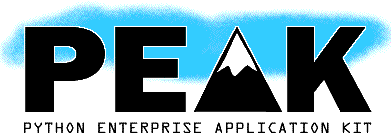As of 0.7a1, the Trellis has a new API for specifying basic rules and value
attributes. This change was made in part for readability reasons, but also
to support more fine-grained control over the behavior of rules and attributes,
including new features like "lazy" cells.
In 0.7a1, the older API was still present, but issued deprecation warnings. In
0.7a2, the old API has been removed altogether, so if you have not yet updated
your code, you will need to install the 0.7a1 version to do your porting before
you upgrade to 0.7a1 or higher.
The following is a quick guide to the differences between the old and new APIs.
There are now a wider variety of ways to declare rules. Depending on the
rule's intent or purpose, there are now three main ways to declare a rule:
Some rules, like x = trellis.rule(lambda self: {}), are meant only to
initialize an attribute value, which will then remain constant -- or at least
will not be recalculated. In the new API, the equivalent construct would be
x = trellis.make(dict).
The argument to make() can currently be a function or a type. If it's a
function (or any other object with a __get__ method), its __get__
method will be called to bind it to the object instance before calling it.
Thus, you can use something like x = trellis.make(lambda self: self.foo),
and have it work correctly as well.
Individual make rules can also be made writable, by passing in a
writable=True keyword argument. This allows you to translate code like
this:
trellis.values(x = None)
trellis.rules(x = lambda self: {})
into:
x = trellis.make(dict, writable=True)
which is more compact and clearer about the code's intent.
When writable, the created cell will be a Value instead of a Constant.
Either way, the cell will be "optional" (i.e., created only when needed),
unless you pass in optional=False to the constructor, and the supplied
rule will only be invoked once, before the cell is created.
Note that in general, make rules should not read any other trellis values,
since they will never be recalculated, and anything they do read will be
treated as dependencies of any rule that caused the compute rule to be invoked.
(A future version of the code may prevent make rules from accessing trellis
values, by raising an error after the fact.)
Finally, note that there is also a make.attrs() form available:
trellis.make.attrs(
x = dict,
y = list,
...
)
And that make() can also be used as a decorator, either as @make or
using a 2.3-compatible make() form. (And both decorator forms allow
keyword arguments to be specified.)
Rules that simply compute a value, with no side-effects or dependency on their
previous value, can be specified using @compute or compute.attrs().
Compute rules are both optional and "lazy". If a compute rule has no
listeners, in other words, it is not recalculated until the next time it is
read. Thus, it cannot enforce side effects or rely on its previous value.
You can make a compute rule discrete, by passing in resetting_to=val,
where val is the value you would like the rule to automatically reset itself
to between recalculations.
However, if a compute rule is not discrete, it has the option of becoming
Constant if at runtime it stops depending on any other trellis values.
You can specify multiple compute rules using compute.attrs() in place of
the old rules() function.
The maintain constructor should be used for rules that must be
recalculated every time their dependencies change, even if there are no
rules depending on their return value. Unlike compute rules, maintain
rules always have a writable value, and can read their previous value as well
as modify other trellis values and objects.
A maintain rule can have an initial value (using the initially= or
make= keywords), or can be discrete (using the resetting_to= keyword).
It can also be optional (by specifying optional=True).
The make keyword argument allows you to specify an initialization function,
similar to the make() constructor, to initialize the value of the rule.
This can be helpful for translating code like this:
@trellis.rule
def data(self):
data = self.data
if data is None:
data = {}
...
into this:
@trellis.maintain(make=dict)
def data(self):
data = self.data
...
In other words, the make keyword lets you initialize the value the
attribute will have, before the first invocation of the rule. (The
initially keyword does the same thing, but specifies a constant value
instead of a callable that creates the value.)
In the old API, it was possible to declare a rule and a value for the same
attribute in two different locations. In fact, it was required!
In the new API, however, any value associated with a rule is declared with the
rule's declaration, using the initially= or resetting_to= keywords.
You may use initially to specify an initial value for maintain rules,
and resetting_to to specify a reset value for any compute or
maintain rules that were previously @discrete.
Under the new API, you can obtain a previous rule definition using an
expression like MyBaseClass.someattr.rule. This can be helpful in cases
where you want to change an option used in the base class, e.g.:
# same rule, but should be 42 initially instead of 23
foo = trellis.maintain(MyBaseClass.foo.rule, initially=42)
If you are using any of the special registries used by the old API (such as
the CellRules add-on), you will need to use this approach instead, as
the new API does not register things in the same way, and some or all of the
registries will disappear altogether in 0.7a2.
